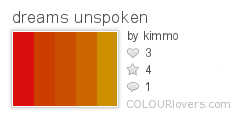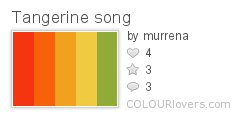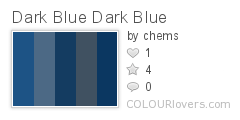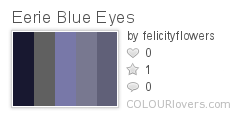 0
comments
Wednesday, October 29, 2008
0
comments
Wednesday, October 29, 2008
 0
comments
Wednesday, October 29, 2008
0
comments
Wednesday, October 29, 2008
 0
comments
Monday, October 27, 2008
0
comments
Monday, October 27, 2008
I would be hard pressed to try incorporating all the previously mentioned elements so I am going to just pick a few as it relates to my idea.
I want to build up the scene first like the original; I will introduce Joel and Clementine along with their new found relationship.
Using a cut-scene then freezing the frame and cutting them out of the frame. As we move through more sequences a buildup of collaged cutouts remain on the scene.
I intend to replicate this process throughout the first half of the title sequence. Then I would change the music to relate to what's happening in the now as opposed to the past memory. The titles would then appear over faces and blur out the face with an added red coloring and buzzing sound effect. A spotlight might appear on the text and it disappears.
For music I believe the original 2 songs work best:
James Warren/Beck - Everybody's Got to Learn Sometime
John Brion - Main Title
 0
comments
0
comments
The following items are pieces I chose from the original title sequence that I believe need to be included in my sequence to accurately set up the film:
1. 2 songs - One song that uses lyrics to allude to a past and present about love, the other song that's more abstract without lyrics that creates a faster pace to match movement to an impeding action. Or find one song that incorporates both aspects.
2. Scene coloring - the first part of the sequence has a dark blue coloring with skin tones desaturated. When he gets out of his car there is no modification to the natural color provided by street lights; an orange color cast from sodium vapor lights.
3. Memorable items - throws the tape out the window of his car when he becomes frustrated listening to the song.
3. Blownout lights - the streetlights and other car headlights starburst and are brighter than normal; gives a delusional appearance.
4. Disintegration of text - the titles fade in and slowly disintegrate
5. blurring - close shots stay stationary and allow the subject to drift off the frame and become out of focus.
6. texture - shots of the rain on the window and shadows of the rain on Joel's face help increase the depressive feel.
Elements from other parts of the film that are relevant to a new title sequence:
1. color red - used in a semi transparent fashion that bleeds over subjects to allude to a memory about to be erased. usually paired with a jarring sound effect like a electrical buzzing sound.
2. faces - distorted, blurred and eyes flipped upside-down to show partial recollection or mixed up memory or someone Joel hasn't met yet.
3. sound effects - echoing chamber quality to instigate a memory beginning to fall apart. background sounds like waves drift through other scenes or linger on to show that not all of the memory is erased. muffled conversations allude to Joel being incapacitated but able to hear what's actual going on in the real world.
4. time - sped up portions to indulge a creepy feeling of lost memories or to conclude a memory being erased. implying a instance of altered reality or dream-like state.
5. mirrored scenes - can't escape time as you try to walk one direction he returns to the same spot he started.
6. color as accent - mostly all desaturated scenes except where Clementine invokes happiness or love; then she brightly colored.
7. scale - during childhood memories Joel is in an adult body but as small as child and his surroundings are exaggeratedly large.
8. lighting - spotlights are used to hone in on Joel while he's traveling through his memories almost in a Nazi-like search light fashion. Gives the feeling of being terrified and trying to escape.
9. memorable items - books, drawings, collages, toys, gifts, food from dining out, quotes, hand made figures (potato beings), photos and clothing.
Now I need to narrow down which elements I want to use from the above lists in order to create a storyboard for the new title sequence.
 0
comments
0
comments
Before the title sequence even starts there is about 17mintues of the beginning of the film shown to introduce the character Joel and his girlfriend Clementine. It continues to show one full day of Joel and how simplistically depressive it is. Only on this day he randomly decides to deviate from his normal work routine and takes a train out to Montak where on his way, his attention is deterred to Clementine.
The movie quickly goes through an awkward set of interactions between the two as they try to get to know each other. Just before the credits start, the audience is lead to believe Joel has just found the most amazing person that is going to derail his previously depressive normalcy. As he pulls up to Clementine's house to drop her off after an amazing first day/all nighter he is approached while still in his car by a young man that the audience has no clue yet as to his identity or relevance. The young man asks if Joel needs help and Joel has no clue what the young man is asking. The scene ends with him starring down the road in a confused state as the young man walks away.
Credits appear as a totally unexpected scene of Joel crying at night in his car when the previous scene was a happy Joel in the bright morning. Obviously a big cut to a different-probably future moment. The music qualities sound muffled alluding to his actual stereo playing the music in the car. The first title, 'FOCUS FEATURES' comes in slowly and then disintegrates off the screen.
Cuts to Joel driving down the road with more credits revealing and quickly disintegrating. Then Joel takes the tape out and the music stops. A symphonic score takes over the rest of the credits with a strong flute and brass section and some strings leading the score.
We watch Joel pull up to his apartment and some guys in a van are making comments to each other re-affirming that the guy walking is indeed Joel and it's the right address. They don't appear to be malicious and Joel seems to ignore them as if he knows of some inevitable circumstance.
The titles end just as the van passes Joel walking to his apartment with a bag of groceries.
I believe this title sequence sets up a few key elements of the film that help the viewer understand from the beginning that the story is about disconnected sequences. The music at the beginning of the title sequence coincidentally talks about "needing someone to make the sunshine and everybody needing to learn sometime." Those lyrics paired with Joel's car driving crying sequence helps reaffirm that Joel had his sunshine and is learning this time. Once he removes the tape he's not seen crying anymore and the music changes. This helps show how Joel is moving on with his life almost aimlessly or without thinking. As he walks from his car to his apartment and the guys are trying to figure out if it's Joel; the audience is shown a depressed man but ignoring his surroundings. All of these sequences together again instill that incurable loneliness Joel feels.
In short the title sequence and the 17min of film beforehand do a good job of setting up the back story, alluding to a lost love, making a hasty decision, introducing characters and setting up an impending action between Joel and the guys in the van.
 0
comments
Monday, October 20, 2008
0
comments
Monday, October 20, 2008
Here is a list of the opening titles for Eternal Sunshine of the Spotless Mind:
FOCUS FEATURES presents
an ANONYMOUS CONTENT production
in association with THIS IS THAT
JIM CARREY
KATE WINSLET
KIRSTEN DUNST
ETERNAL SUNSHINE
OF THE SPOTLESS MIND
MARK RUFFALO
ELIJAH WOOD
and TOM WILKINSON
JANE ADAMS
DAVID CROSS
DEIRDRE O'CONNELL
DEBBON AYER
casting by
JEANNA MCCARTHY, CSA
associate producers
LINDA FIELDS HILL
MICHAEL A. JACKMAN
costume designer
MELISSA TOTH
music by
JON BRION
editor
VALDIS OSKARSDOTTIR
production designer
DAN LEIGH
directory of photography
ELLEN KURAS, ASC
executive producers
DAVID BUSHELL
CHARLIE KAUFMAN
GLENN WILLIAMSON
GEORGES BERMANN
produced by
STEVE GOLIN and ANTHONY BREGMAN
story by
CHARLIE KAUFMAN
& MICHEL GONDRY
& PIERRE BISMUTH
screenplay by
CHARLIE KAUFMAN
directed by
MICHEL GONDRY
 0
comments
0
comments
I went through the whole film and selected still frames that captured the tone, color, mood, narrative style, visual effects, and the visual effects from audio changes to help create a useful linear diagram to referrence assets for the animation creation:
Linear frame sequence
 1 comments
1 comments
Creative Brief
Project Details
Date: 10-18-08
Prepared by: Michael Broschart
Project name: Eternal Sunshine of the Spotless Mind Title Sequence
Design Lead: Michael Broschart
Hand-off to Production: 10/15/2008 Product Release: TBA
Project Concept
To develop a new title sequence that continues to follow the film’s narrative style while keeping the audience captivated and suspended until the film’s beginning.
Objectives
To bring something new to the original sequence from found imagery, type, video and sound. To discover and portray the filmmaker’s intentions while setting up the expectations for the audience. Thinking of the title as your only symbol to sum up the tone, look-and-feel, atmosphere and set the stage for the character(s).
Audience
The original filmmaker’s intended audience and our Art 328 class.
Perception/Tone
The overall perception is that of a dark yet comedic romance set to portray an average middle class Joe falling in love with an unexpected choice. The movie uses humor and snide interactions to build the relationship. Colors remain dark and muted except when portraying the new fascination. Then bright colors are used in moderation.
Communication Strategy
Carefully document the filmmaker’s color choices, tone shifts, transition styles, narrative word choice, and audio effects to compile a list of necessary elements that make the film what it is. Using the previous title sequence as a foundation I will push the sequence farther by enriching fleeting moments and emphasizing the erasure of memory.
Competitive Landscape
Similar movie titles:
2006 Amour-Legende
2006 Wristcutters: A Love Story
2006 Stranger Than Fiction
2005 Fetching Cody
2004 I Heart Huckabees
2002 Punch-Drunk Love
2001 Vanilla Sky
1999 Purgatory
1999 Me Myself I
1998 Sliding Doors
1997 Deconstructing Harry
1997 Open Your Eyes
1996 Schizopolis
1993 Groundhog Day
1991 Defending Your Life
1990 Joe Versus the Volcano
1981 Modern Romance
1980 Stardust Memories
1977 Annie Hall
1970 Alex in Wonderland
1967 Je t'aime, Je t'aime
Single-Minded Message
Inner struggle
Font Choices
Averoigne

Berry's Hand

Gumbootcha

ITC Machine

Neutra

 0
comments
Wednesday, October 15, 2008
0
comments
Wednesday, October 15, 2008
I found this thorough review and technical critique of Eternal Sunshine of the spotless mind which aids very well in summarizing most of the characteristics I also found in the movie:
Dorian's critique
Here's another article that has a totally different feeling about the movie:
Snarkmarket
I felt this particular review really dove in quickly looking for a director to produce something even more compelling with a different actor. I loved the film and it's too bad this particular person couldn't enjoy it as well as I did.
This next read feels a little more unbiased than the previous two and one quote already stands out from the article as it applies to our project,
"By the opening credits, it’s apparent that this movie is investigating something deeper than a simple love story, but the viewer has no clue what, and still isn’t sure by the end of the film."RF Critique
*edit: sorry I didn't realize this particular article was Christian biased.
Dennis C. Schweitzer's thesis from The College of Fine Arts of Ohio University on TON & TRAUM: A CRITICAL ANALYSIS OF THE USE OF SOUND EFFECTS AND MUSIC IN CONTEMPORARY NARRATIVE FILM' touches on how sound effects help create the amazing way of not knowing if you are viewing the character's reality or memory.
Eternal Sunshine of the Spotless Mind is quite remarkable for there is literally no way to distinguish between Jim Carrey's real life and his dreams on neither the sonic nor the visual level. What the audience sees on the screen is mostly the perspective of Jim Carrey's character as he is in his mind, which makes the film's reality the product of Carrey's memory. In other words, the audience perceives the film in the way Carrey's character saw and heard what we see now, which explains the film's particular look and sound. Eternal Sunshine of the Spotless Mind might thus be the truest form of depicting a character's life hence it depicts the world of its protagonist in the way he himself perceives it.PDF of thesis
Yet another interesting read I found linked off the official site of a USAToday interview with Charlie Kauffman:Read it!
Found this guy's typographic voice book of the movie on youtube: Video
Here's a students project re-doing the opening credits: Video
 0
comments
Tuesday, October 14, 2008
0
comments
Tuesday, October 14, 2008
All of Corvallis is without Eternal Sunshine of the Spotless Mind and none of my friends who are up have a copy legal or not. Quite pathetic. Even if I was to download it, that would take 8hrs for a 1.3gb file @ 20kbps on torrent. Should have set up a group viewing if you rented it from one of the local shops.
**Update: I was able to secure a copy**
 0
comments
0
comments
This 3rd animation uses a recognizable image of an orchid in a pot along with the content limitation of only using a plant:
train_referential
It took me quite a while to figure out what kind of recognizable image I was going to use. At first I was thinking of a worm but then I thought about how hard it would be to make it meander in a curvilinear fashion. The very next thing I thought of was a flower growing and breaking which lead me to the very nice potted orchid.
This animation almost built itself. As soon as I clipped the flower and pot from the background in Photoshop and assembled the layers on the stage I instantly saw how the flower would interact with the sound. It became a very fluid mechanical process that was a lot easier than the previous animation (Thank God!).
I went through the sound clip a few times to decipher all the sounds and I noted at one point it sounds like a second car squeak comes in. I also noted the steam venting happens twice and trails off each time. So I started with animating the first plant growing out of its pot in sync with the train squeak. I instantly tested movie and got a laugh out of the train squeak noise now relating to flower growth.
From there I continued to match up the different types of car squeaks. I listened carefully for the sound to see if it sounded like a quick directional break or a simple up and down motion. As you will see I applied the quick 2-part squeak to the flower breaking and the 1-part squeak to either the bottom half moving up/down or the top part re-aligning itself. I began to see the sound define the structure of my animation and within an hour I had the animation complete. But not without adding the background changes for the steam venting sounds.
I found all 3 animations I did to be quite successful under the limitations chosen.
 0
comments
0
comments
The following animation uses only one font with the other limitation being a restraint to two colors:
kids meeting with coach before game
**Needs to be run in a small window! If you run it larger than 550 x 400 it will go extremely slow**
Before I started animating I recalled from our first small group session that Chris suggested I try playing the sound clip backwards so that the words are not recognizable. I agreed that this would help relieve any continuity between animation and interpretation from hearing English words. So I went ahead and reversed the clip which worked out in the end to my advantage.
After getting about 2 seconds into this animation I realized I picked a sound that had way too many major and minor sounds to keep track of. But I chose not to back down from the challenge. The other challenge was trying to think of letters and letter combinations that I could use which would not represent humans too literally. For font choice I chose one that looked handwritten called TaylorsHand. This particular font had specific qualities that I felt mimicked the human voice in a subtle way. The edges were not sharp but organic and the proportions had good variation.
When first beginning the animation I tried to instantly start separating the sounds to letters. After an hour or two it became too aggrivating so I left the computer and went for a walk to 7-11. On my walk I tried to think of the other parts of the animation that needed attention so I could let my mind cool off from the tedious task of separating out all the kid chatter. On my way home I came to the conclusion to use two letterforms for the coach since he stood out and to make him a different color. I also thought of making smaller movie clip animations of letters jostling about to act as the background chatter; then to add irregularity to some. When I got back infront of my computer I went straight to working on the background chatter as it seemed easier to get started with.
Indeed it was easier and I had it done much sooner than I thought. I previewed the animation with two background movie clips and realized I needed more movie clips in the background to make it feel like you are surrounded at a soccer game by about 20 or so people. I went a lil overboard on syncing and duplicating which resulted in a very slow-running animation. So I pulled out the background movie clips until it ran better but still not full frame rate. I forgot to mention I added a blur effect and faded out these clips to reinforce the background quality. I believe the filter might have been causing the slower frame rate. Basically after some fine tuning I had the perfect set of background movie clips.
Next I got back to picking out the voices that stood out during the animation. There were 3 kids, grass crunching, the coach, random voice beeps and a mom sound. I picked a letter or symbol for each sound except the coach had a combination of two letterforms since his voice stood out the most. I then proceeded to follow the voices down the timeline and accent each outstanding voice with a variety of animation styles. I made the letterforms/symbols move directionally up and down and side to side depending on how the voice trailed in or out. Then depending on how loud or soft the voice was I adjusted the size over time. The only time I did not stick to this animating rule was when the odd grass crunching sound came in. To abstractly portray that grass sound I used a mask on some tilde symbols and revealed small bits in sync with the crunching. If there was a group of kids from the background shouting and coming into the foreground -- I took one of the background movie clips and brought it's alpha to 100% and animated it according to my previous animation rules.
During this animation process I tested my movie many many times to make sure I was still in sync and not killing the frame rate too bad. After a while I didn't have to test it as much since I knew from previous tests I was getting the sync correct.
On my last test I was truly amazed how well the irregular movieclips ended up matching up to voices both on purpose and by chance. It really was a work of art functioning on it's own. For the next animation I hope not to have as much tedious syncing.
 0
comments
Monday, October 13, 2008
0
comments
Monday, October 13, 2008
Here's my abstract animation with the one media limitation being hand drawn. Even though it's all vector I used my Wacom tablet to draw the assets:
abstract_animation
The initial concept was to remove the referential sounds of the wood fire burning into a completely different image. At first I was thinking of using found objects and still photographs of a pencils rolling around and breaking whenever a crackle-pop from the fire was heard. After taking the photographs and thinking more on the concept I realized that it was still too literal. The pencil is wood and would make a similar sound when snapped. Therefore it might be too easy to understand the sound you are hearing. I wanted more of a challenge.
This drove me to instead, choose to digitally hand-draw shapes and lines. I thought about bowling balls rolling around for the rumbling noise the fire makes constantly so I drew some lopsided circles. They needed to be lopsided because the low rumbling fire burning sound was not a constant tone but slightly wavering. As these lopsided circles would roll, they give the look of an uneven sound much like the fire. The circles are also semi-transparent so that when they pass over/under each other they show a color interaction much like the rumbles you hear from the fire. I tried to have the circles animate across the stage at a pretty constant speed but at different times so you can relate to the constant hum yet unevenness of the rumbles.
Secondly I noticed there was one odd sound in my recording. This bell dropping sound. So in order to represent it I drew a circle that appears to go up then come down. As it comes down 2 more circles appear from it and all of them bounce off the ground and fade away. I chose this animation because the sound's pitch goes up and then down. On the downward part it has a few different tones; therefore multiple circles.
Lastly I animated different types of lines breaking to reference the crackles and pops. You'll notice in the beginning the first two lines reveal from a beginning point and at the end of the reveal they snap in half. I chose this method because the first two crackle sounds meander around before making the pop sound. All the rest of the popping sounds are quite instant and do not need a lead-in. You will also notice the first two lines are curvy which is trying to mimic the change in pace of the crackle before popping. All the other lines are sharp and vary in weight and size depending on how loud or close the popping sound appears.
All-in-all I am quite satisfied with my abstract interpretation of fire using only hand drawn shapes and allowing the referential sound determine the structure.
 0
comments
Monday, October 6, 2008
0
comments
Monday, October 6, 2008
Well I watched atleast 10 random seconds of every video in the essential flash group and found that none of them provided anything new for me to learn except for the inverse rounded corner feature you can apply to the rectangle shapes.
 0
comments
0
comments
I chose the following 3 sounds from the previous 6:
1. Fire Crackling
2. Kids Playing Soccer
3. Train ride
You will find the in-class comments below the last image.
The following are my sketches and accompanying mindmaps of what I heard:





Comments from small group discussion:
Fire burning::
The forms illustrated were a good abstraction of the formal qualities. The crackling noise illustrations would be better represented if they appeared to come out of no-where. By have the forms evenly spaced out they do not relate to the variation of when the crackling noises occur
Kids playing soccer::
Try playing the soundclip in reverse so that you cannot understand the conversations and instead focus more on the formal qualities. There are interesting interactions between all the voices. Some of the child voices try to over power or push away the other sounds. This could be represented by shapes over powering or pushing others off the stage. There is a pretty clear definition of space between the group discussing the game and the background games going on. The background feels muffled and softer with a more constant tone vs the foreground sounds.
Train::
The metal sounds screeching are much louder and more piercing than they are illustrated. The sketches could benefit from a larger scale difference to showcase the aforementioned metal qualities. The 2nd and 3rd sketch do a good job of abstractly defining the metal screeching sound by using sharp lines that change direction in a perpendicular fashion.
 1 comments
Wednesday, October 1, 2008
1 comments
Wednesday, October 1, 2008
You can view a copy of my film notes in PDF form here»
In summary I felt the film served 3 purposes:
1. To show the class a variety of ways of interaction and storytelling.
2. Make you think about the ways in which limitations can sculpt a project.
3. How the distance and pursuit of failure changes the expected outcome.
I came upon the trailer for this film on youtube and the trailer makes it appear the movie is much more dramatic and intense than I perceived it to be.
view the trailer»




















